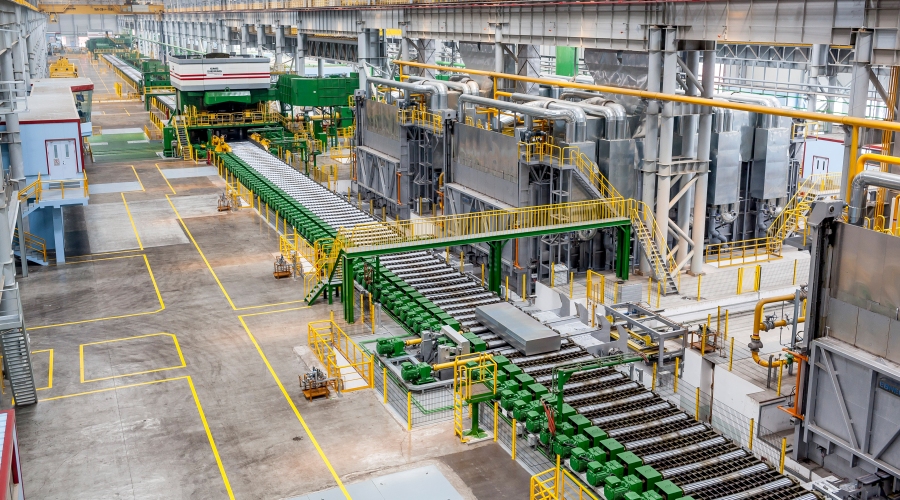US sanctions on Rusal shatter aluminium’s supply chain: Andy Home

The opinions expressed here are those of the author, a columnist for Reuters
LONDON, April 26 (Reuters) – “Our industry is going to suffer from disruption, distortion and damage. April 2018 has not been a good month for aluminium globally.”
That was the view of Ron Knapp, secretary-general of the International Aluminium Institute (IAI), in his opening address to CRU’s World Aluminium Conference in London.
And none of analysts, traders, producers and consumers listening would disagree, given the carnage unleashed by the April 6 imposition of U.S. sanctions on Russian oligarch Oleg Deripaska and his Rusal aluminium empire.
The aluminium price has experienced unprecedented turbulence. The raw material supply chain has teetered on the edge of collapse. And the tremors have raced down the value chain through major automakers as far as original equipment suppliers.
Shocked by how its precision strike on Deripaska has ruptured the global aluminium market in the space of just two weeks, the U.S. Administration has rapidly rowed back.
By extending the sanctions deadline to Oct. 23, 2018, the Treasury Department has given Rusal and the aluminium market some breathing space.
Both will need it.
Because this has been an alarming wake-up call for an industry that has prided itself on its efficiency, innovation and strong usage growth in the transport sector.
The U.S. sanctions have shattered illusions of price and supply chain stability.

Shut out
The sanctions deployed against Deripaska were draconian, the type of punitive action previously reserved for Latin American drug lords.
By including potential secondary sanctions on non-U.S. entities, the result was effectively to shut him and his companies out of the dollar system.
When one of those companies is the largest aluminium producer outside of China, that was always going to be traumatic.
The London Metal Exchange (LME) price rallied over 20 percent in the week after the sanctions were announced. Time-spreads went haywire and volumes surged to fresh daily records.
The sanctions’ disruptive power flowed down credit lines in a commodity market that is heavily dependent on bank financing, both for fresh material flows and inventory management, particularly Rusal-brand inventory management.
So far, however, the damage in the paper market has been contained.
“We haven’t seen a real break in the supply chain of contracts,” Erik Gundersen, head of aluminium at trade house Mercuria, told the CRU conference.
Collapsing supply chain
The same, however, cannot be said of the raw materials supply chain.
Although Rusal, as the name suggests, is a Russian company with most of its smelting capacity sitting in the Siberian heartland, its raw materials operations are global.
It mines bauxite in Jamaica, Guinea and Guyana and operates refineries to convert bauxite into alumina in Jamaica, Ireland and Ukraine. Each one of these subsidiaries has its own subset of sanction problems.
But Rusal’s activities run deeper still.
Although on paper it is almost self-sufficient in alumina, it, like many other producers, is a big and active trader, swapping tonnages across regions.
In 2017 it sold more than two million tonnes of alumina to third parties and bought just under that amount.
This largely hidden layer of the supply chain has caused U.S. sanctions to ricochet in totally unexpected directions.
Consider the case of the Aughinish refinery in Ireland.
If Rio Tinto halts deliveries of bauxite to Aughinish, it closes, removing two million tonnes of alumina from the European market, which in turn causes smelter closures in Scotland, France and Iceland.
Even if physical flows could be maintained, the pricing dislocation would probably close the smelters anyway.
Western world alumina supply had already taken a hit with the partial closure of Hydro’s giant Alunorte plant in Brazil. The Rusal sanctions have sent the price to record highs above $700 per tonne.
Aluminium smelting is a conversion business and “margins have just collapsed overnight,” according to Gundersen.
And that applies to smelters in the United States as much as anywhere else.
The Rusal ripple effect has directly undermined the Administration’s stated goal of seeing idled capacity restart in the United States.
As Eoin Dinsmore, head of CRU’s aluminium department, put it, “you can’t yank the biggest supplier out of the supply chain and think it’s going to be OK.”
Pain relief
Which is why Treasury has extended from June 5 to Oct. 23 the time allowed for both U.S. and overseas entities to continue with “winding down” exposure to Rusal.
Well that and likely behind-the-scenes pleading from what Treasury Secretary Steven Mnuchin called “our partners and allies” as well as the highly ironic prospect of China exporting more aluminium to plug the rest of the world’s shortfall.
China is, by the way, expected to start exporting alumina this month because of the yawning arbitrage gap in that market segment.
The key thing about the sanctions reprieve, according to Oliver Nugent, analyst at ING Bank, is that it allows payments into non-blocked accounts for existing contracts.
“Rusal buyers are free of sanctions if it’s a continuation contract and settled outside of the dollar system.”
That means Aughinish will stay open. So too will the European smelters.
For now.
The future is uncertain.
The U.S. Treasury has stated the price for lifting the sanctions. “The path for the United States to provide sanctions relief is through divestment and relinquishment of control of RUSAL by Oleg Deripaska.”
The ball is now back in the Moscow’s court.
Future uncertain
The aluminium industry, meanwhile, must recatch its breath.
Sanctions were not just about Russia and Rusal, according to the IAI’s Knapp. They are “aluminium sanctions” in so far as “the effect of this action was industry wide and globally damaging.”
A history of strong usage growth is founded on a history of relatively low and relatively calm pricing by comparison with, say, copper.
That has just gone out the window. The LME price exploded from $1,977 per tonne to $2,718 tonne in the space of two weeks. After the April 23 stay of execution from the Treasury Department, it has imploded back to a current $2,205.
The alumina price, note, has not shown any signs of following the metal price lower.
And that’s the shock awakening for this market.
Copper has a history of price volatility because of the unpredictability of supply from hard-rock mining in often challenging environments.
Aluminium has never been short of bauxite or alumina to the extent of multiple smelter closures.
Supply hits are relatively few and far between and in nine out of ten cases occur when a smelter loses power for unexpected reasons.
The industry now realises it too has raw materials risk.
That super-lean, just-in-time supply chain has proven to be as brittle as glass.
For protectionists it’s proof that “a global supply chain is vulnerable to geopolitical risk,” to quote Jesse Gary, general counsel for Century Aluminum, the U.S. producer that has led the lobbying for import tariffs.
For globalists, it’s a warning that messing with deeply-enmeshed global supply chains risks multiple unintended consequences.
In aluminium’s case, all of them bad.
(By Andy Home; Editing by David Evans)
{{ commodity.name }}
{{ post.title }}
{{ post.date }}

Comments